Hau Giang Biomass Power Plant: potential from trusted partners
Designed to generate a power capacity of 20MW, equivalent to demand from about 93,000 general households, the plant is expected to consume about 130,000 tonnes of rice husks – a rich agricultural by-products source in Hau Giang and the Mekong Delta region, providing the locality with about 125GWh per year.
Once put into operation in the fourth quarter of 2024, the plant is envisioned to become the first and biggest electricity producing unit to use rice husk as a material.
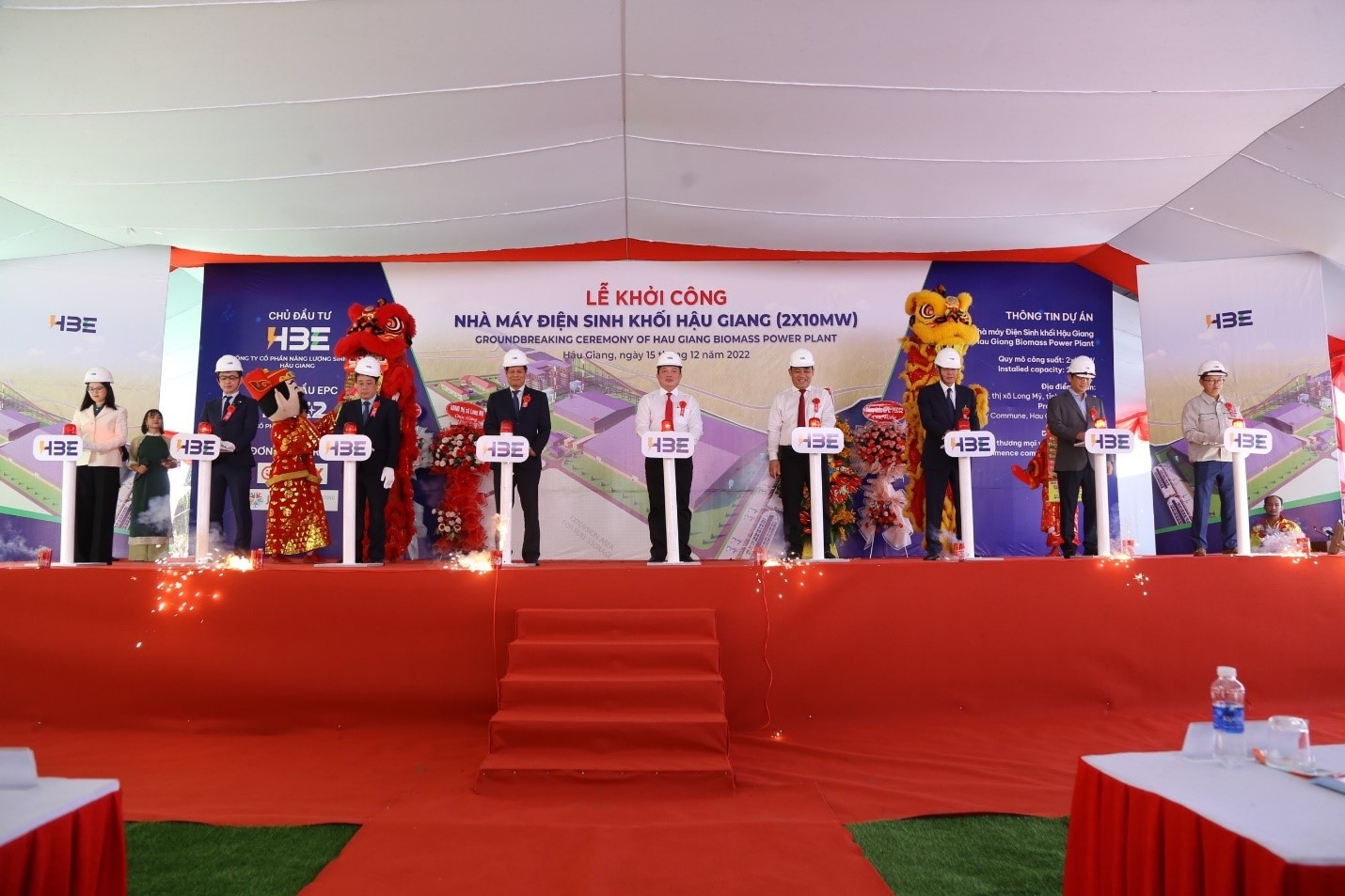 |
| The ground-breaking ceremony for Hau Giang Biomass Power Plant on December 15 |
According to the Institute of Energy, Vietnam has rich potential with a huge storage of biomass energy. The total input currently reaches 118 million tonnes per year, including 40 million tonnes of rice straw, 8 million tonnes of rice husks, 6 million tonnes of bagasse and over 50 million tonnes of coffee husks, bean pods, wood waste, and the like.
It’s therefore important to make use of such materials sources, especially when energy and green development is constantly a hot topic over the past few years.
However, to utilise this valuable source of biomass power, it’s important to highlight the role of technology in producing and evaluating the impact and issues related to the environment during the construction, operation and maintenance process.
Hau Giang Bioenergy JSC’s partner – Erex Corporation from Japan has brought such benefits.
Reliable partners from Japan
Founded in 1999, Erex Corporation is a power company using biomass as a foundation to operate fuel purchases and development, power generation, and retail. Erex currently possesses and administers the five biggest biomass factories in Japan with a total capacity of 269MW.
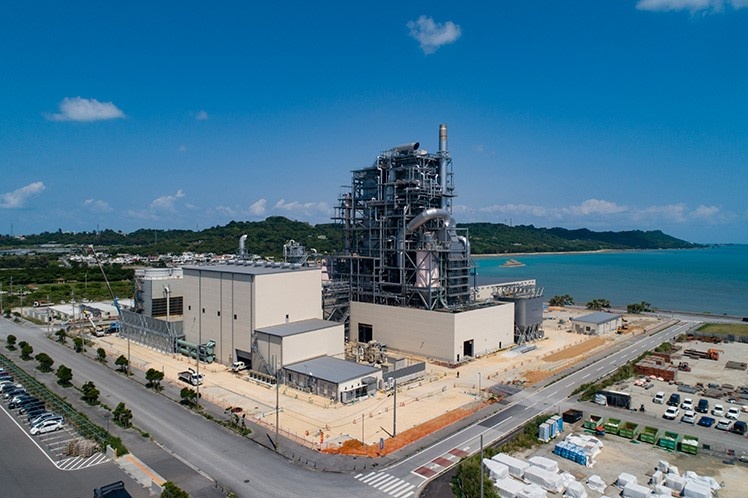 |
| One of Erex’s biomass power plants in Okinawa, Japan |
“Unlike solar or wind electricity, biomass-powered electricity is more stable thanks to its independence from natural factors such as weather,” said Hitoshi Honna, president of Erex Corporation at the Hau Giang Biomass Power Plant ground-breaking event.
| In addition to activities related to biomass power, Erex Corporation is carrying out social projects to contribute to Vietnam’s development. |
“With an abundant source of biomass materials from agricultural by-products nationwide, Vietnam has huge potential in developing biomass energy. Hau Giang Biomass Power Plant is our first plant we cooperate with partners outside Japan.”
Like its Japan-based factories, Hau Giang Biomass Power Plant will employ steam condensing turbine technology, using biomass materials (mainly rice husks), which are carbon-neutral and environmentally friendly.
The plant’s operation is predicted to raise the renewable energy rate, thus increasing the stability of energy supply sources, contributing to achieving carbon neutrality by 2050 as Prime Minister Pham Minh Chinh committed at COP 26.
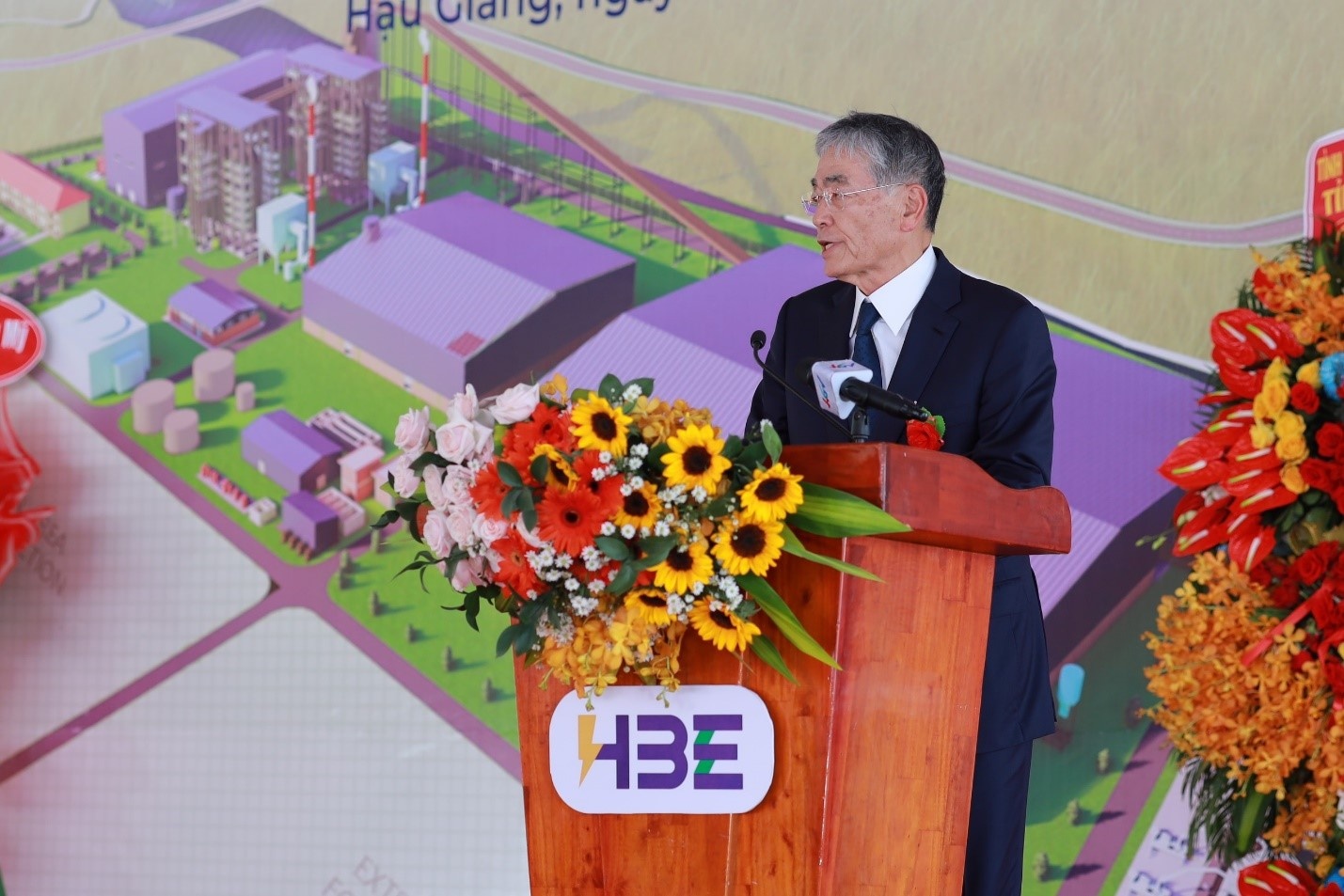 |
| Hitoshi Honna, president of Erex Corporation giving opening remarks at the ground-breaking event on December 15 |
“At the beginning of 2022, we collaborated with some Vietnamese partners to conduct surveys in 20 localities and set a goal to build 14 biomass power plants in 12 localities by 2030 with a total capacity surpassing 1,100MW,” Honna said.
In addition to activities related to biomass power, the corporation is, step by step, carrying out social projects to contribute to Vietnam’s development such as sponsoring scholarship to support human resource training.
The programme will help train high quality human resources in various sectors, contributing to developing Vietnam while at the same time, enhancing mutual understanding between the two countries.
With a vision to become “a pioneer in the new era of electric power with renewable energy at its core,” Erex Corporation has been expanding its work to countries in Asia, in which Hau Giang Biomass Power Plant aims to lay the foundations for sustainable development.
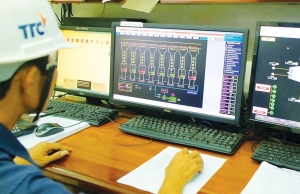 | Biomass boost to fuel power evolution Although the Vietnamese government has introduced policies to promote the development of biomass power, results so far remain modest, leaving insiders to ponder what is hindering the development of this type of energy. |
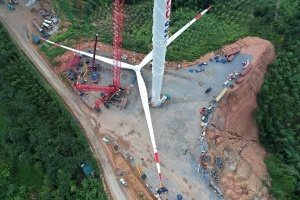 | Lang Son to add 4,600MW of wind power in the National Power Development Plan VIII Lang Son People’s Committee is waiting for the government’s approval to add 4.600MW of wind power to the National Power Development Plan VIII with the addition of 32 wind farm projects by 2030. |
What the stars mean:
★ Poor ★ ★ Promising ★★★ Good ★★★★ Very good ★★★★★ Exceptional
 Tag:
Tag:
Related Contents
Latest News
More News
- Global partnerships key to Vietnam’s IFC development (December 26, 2025 | 16:18)
- Vingroup pulls out of bid to invest in North-South high-speed railway (December 26, 2025 | 11:42)
- Strengthening supply chains through trade promotions and customs reform (December 24, 2025 | 14:00)
- PM orders investment model for North–South high-speed rail (December 22, 2025 | 17:43)
- LS Eco Energy to invest in Vietnam rare earth sector (December 22, 2025 | 17:31)
- Government moves to establish International Financial Centre (December 21, 2025 | 21:00)
- Vietnam's IFC to target global investment flows (December 21, 2025 | 18:00)
- Two national hospitals expand capacity with new facilities (December 20, 2025 | 09:00)
- Ha Tinh breaks ground on major Vingroup industrial and energy projects (December 19, 2025 | 18:24)
- EVN launches major power infrastructure projects nationwide (December 19, 2025 | 18:17)





























 Mobile Version
Mobile Version